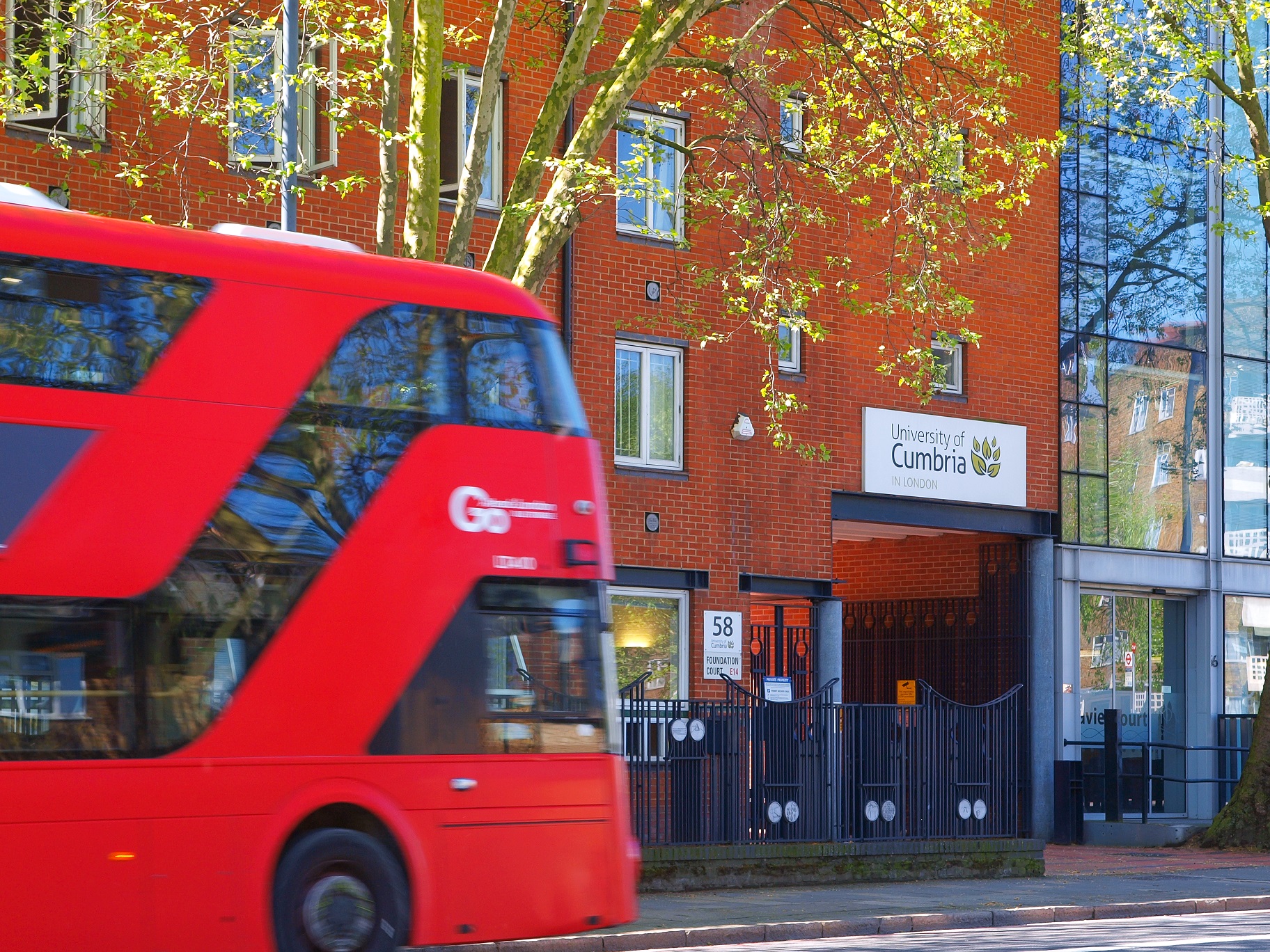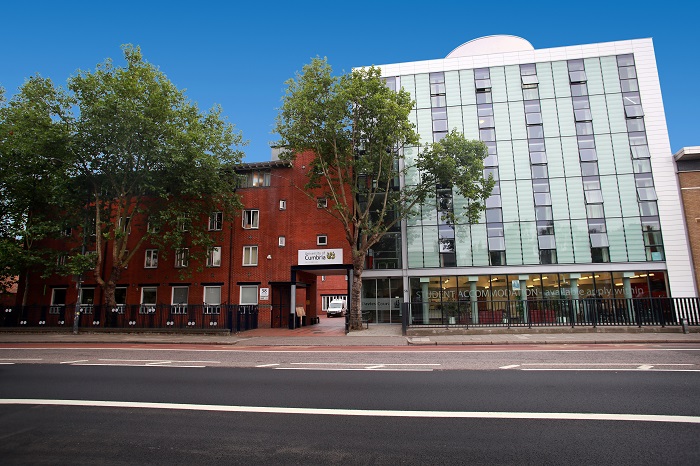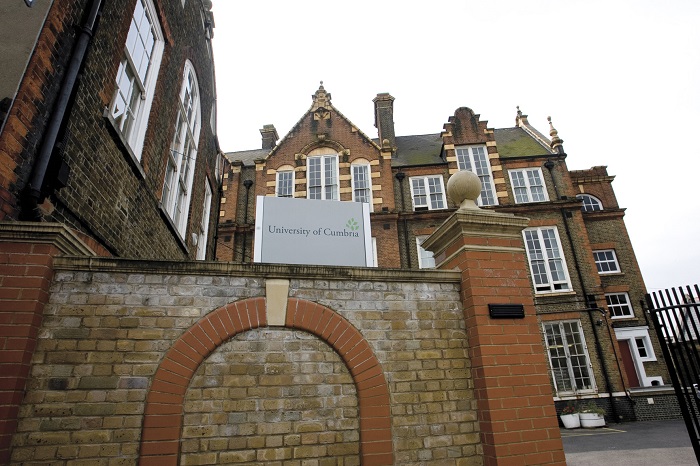
This year marks the 50th anniversary of the Urban Studies Centre in London, which opened in 1972 and took in its first cohort of students in 1973. Our legacy institution St. Martin’s College joined the centre in 1976, laying the foundations for our campus in London and continuing to provide teacher training to the present.
Establishing the Urban Studies Centre
The Urban Studies Centre came about in 1973 when the College of St Mark and St John (which later became known as Plymouth Marjon University) moved from its Chelsea location to Plymouth. The College was determined to maintain a presence in inner London schools for its students to learn from.
The Calouste Gulbenkian Foundation, one of the wealthiest charitable foundations in the world, known for their work within arts, science and education philanthropy gave a grant of £10,000 towards the cost of the centre.
The aim of the Urban Studies Centre was to prepare students for work in inner city schools. Many young teachers were leaving training unprepared by the inequality, under privilege and associated problems in areas such as the East end of London where unemployment rates were very high resulting in high truancy levels and poor attainment in schools. The Urban Studies Centre aimed to make a difference to areas in the East end and to link activities of the schools within the life of the communities.
The first location of the centre was the East End Mission located on the Commercial Road, the students were housed with local families so that they could be in close contact and provide mutual support.

How St Martin’s College got involved
In order for the centre to be viable it was apparent that they would have to reach out to other teacher training colleges to offer placements to their students. Numerous teacher training colleges were approached and Whitelands and Derbyshire College started sending their students for placements.
In 1976 staff at St Martin’s College had received a letter asking them to consider sending some students on teaching practice in Tower Hamlets. At the same time Robert Clayton, a former Vice Principal of Plymouth Marjon, took over as Principal. Robert Clayton was very keen on the idea so met with staff at the Urban Studies Centre to explore what arrangements could be made.
In Autumn 1977 the first four BEd St Martin’s College students from Lancaster were sent on teaching placements to East London followed in the Spring by four PGCE students. The students were housed in basic rooms at The Mission and they were sent to local schools. The Urban Studies Centre students were also required to take part in placements with community groups; youth groups and women's shelters etc. Staff from St Martin’s would visit each student a couple of times during their practice period. The students were gritty and determined and raised to the challenges of the inner-city schools and reported positive experiences both professionally and personally.
Schools in the East end of London in the 1970s were very mixed. Most were run down and deprived in dilapidated buildings but some were overseen by organisations and charities and were large and modern, but all bore little resemblance to what students were used to in the North West of England. Pupils were from many different backgrounds and cultures, often from deprived communities and faced challenging home lives. The teachers and the staff at the Urban Studies Centre were determined to make a difference.
In 1977 the Urban Studies Centre moved into premises of their own, a former vicarage dated 1850 in the Globe Town area of Bethan Green. The property provided accommodation for 12-14 students, had two offices and a common room in the basement.
“My involvement with the USC and with students doing teaching practise there was wonderfully rich and opened my eyes to a new educational world where teachers struggled on a daily basis to bring about student learning and progress. I was full of admiration for their skill, dedication and determination.” Rev David Peacock, former Head of School Experience at St Martin’s College
In the early 1980s St Martin’s entered into a formal partnership with Plymouth Marjon and were joined by Canterbury Christ Church College, Cheltenham and Gloucester College of Higher Education (now University of Gloucestershire) and King Alfred’s College, Winchester. The centre became a registered charity changing its name to the Urban Learning Foundation and opening a second location on East India Dock Road.
Students from St Martin’s continued on successful teaching placements to the Urban Studies Centre and schools in East London throughout the 80s and 90s. The placements tended to attract the best students and they thrived from the experience. The completion of the inner-city placements led to very good job offers for the students involved.

The University of Cumbria in London
In 1999 St Martin’s College recruits its first cohort of BA Primary QTS students who are based full time in London in Tower Hamlets. In 2002 the Directors of the Urban Studies Centre agree to the transfer of the foundation to the University of Gloucestershire. The centre based at this time at East India Dock Road becomes the London campus of the university. St Martin’s College by this time has its own London campus based at the Tower Hamlets Professional Development Centre in Mile End in a large Victorian school building.
In 2007 St Martin’s College together with the Cumbria Institute of the Arts and University of Central Lancashire’s Cumbria sites merge to form the University of Cumbria inheriting all the campuses of these ‘legacy institutions’ including London.
In 2009 the University of Gloucestershire close their London campus and the building is sold to the London Hostels Association and renamed Davies Court. In 2013 the University of Cumbria London campus moves back to East India Dock Road in premises formerly occupied by the Urban Studies Centre.
50 years on, the University of Cumbria has a flourishing campus on the East India Dock Road in Tower Hamlets owing its legacy to those early placements offered by the Urban Studies Centre. Our London campus today offers provision in business, health and social care, and of course in education. 70% of primary schools in the London Borough of Tower Hamlets have a Cumbria-trained teacher on staff, illustrating our impact in transforming lives and livelihoods in the local community.
We would love to hear from you!
Did you have a teaching placement in East London at the Urban Studies Centre when you were at St Martin’s College? Were you a full-time student at our London campus? We would love to hear about your experiences... Share your story here...
Timeline
1973 – Urban Studies Centre (USC) established by Frank Coles, Senior Tutor at College of St Mark and St John (Now Plymouth Marjon University)
1973 - The Calouste Gulbenkian Foundation gave a grant of £10,000 for the USC
1973 – The first College of St Mark and St John teaching students started on placements in the East end of London, housed in premises on Commercial Road belonging to the East End Mission.
1973 – Whitelands College in London and Derbyshire College in Matlock sent students to the USC.
1976 – Robert Clayton becomes principal of St. Martin’s College (SMC)
1976 – Robert Clayton and St Martin’s College staff establish links with the Urban Studies Centre
1977 – Urban Studies Centre has a building of its own, Frank Coles House in Globe Town Area of Bethnal Green
1977 – Autumn term 4 SMC third year BEd students complete their 10 week placements at the USC
1977 – 1999 – SMC continues to send students for successful placements to East London
1984 – 4 May Urban Studies Centre became a registered charity and company limited by guarantee with name change to Urban Learning Foundation.
1995 – Registered address changes from York House, 409 Barking Road, Plaistow E13 8AL to 56-58 East India Dock Road.
1999 - The first cohort of St Martin’s College students is recruited to the BA QTS primary programme in Tower Hamlets
2001 - Due to an increase in student numbers, SMC London moves to the Professional Development Centre located in English Street, Mile End
2002 - The first cohort of BA QTS SMC London students graduate
2002 – June, Directors of the USC approve transfer of the foundation to University of Gloucestershire
2003 – Urban Studies Centre becomes the London campus of the University of Gloucestershire
2009 – in September University of Gloucester close their London campus
2010 – Former campus site of University of Gloucestershire and Urban Studies Centre is sold to the LHA (London Hostels Association) renamed Davies Court.
2013 - The SMC London campus relocates to new premises at 58 East India Dock Road
2017 - More than 70% of Tower Hamlets primary schools employ at least one University of Cumbria graduate
2023 – Transforming Lives and Livelihoods: Celebrating a 50-year legacy in East London event
Come along and help us celebrate our London campus.
Transforming Lives and Livelihoods: Celebrating a 50-year legacy in East London
Sources:
- With special thanks to Arton Medd, David Peacock and Hugh Roberts for sharing their first-hand experiences of the Urban Studies Centre.
- Teachers for the Inner City: The work of the Urban Studies Centre, John Raymer, 1981 https://cdn.gulbenkian.pt/uk-branch/wp-content/uploads/sites/18/1981/01/Teachers-for-the-Inner-City-NP.pdf
- Urban Learning Foundation Inspection of FEFC-funded provision in external institutions, 2000
- http://news.bbc.co.uk/1/hi/england/gloucestershire/8646651.stm
